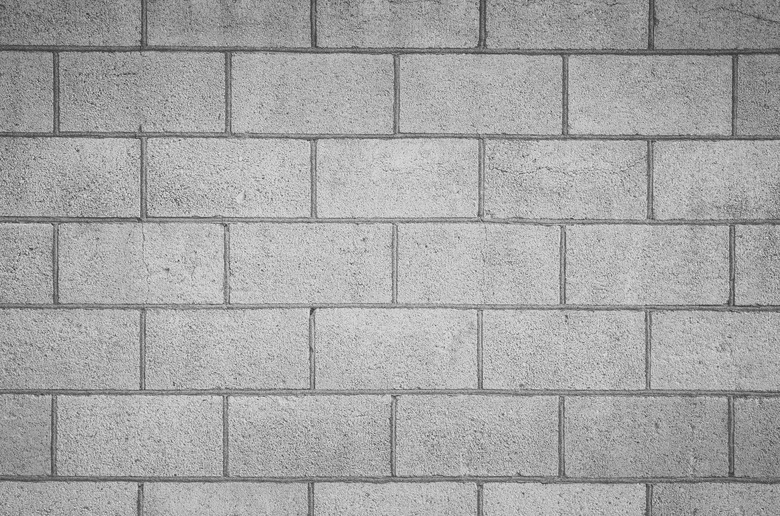How To Stain A Concrete Block Wall
A plain, gray cinder block wall is an unexciting expanse to look at day after day. Adding a slick of stain, a dab of dye or other design element can raise the aesthetic of an otherwise uninspired space. Go from gray to grand by coloring concrete block walls with a stain, specialty paint or sheen that can be applied in an afternoon with the proper tools and techniques. This inexpensive project offers a lot for the investment of time, labor and cost of materials.
Staining Versus Painting Concrete Walls
Staining Versus Painting
Concrete Walls
Paint tends to be the go-to choice when dressing up drab concrete walls, both indoor and out. However, there is a wider selection of stains for concrete block walls, driveways, retaining walls and landscaping structures. Paint is quick and easy to apply, and it looks fantastic after just the first coat is smoothed over the rough concrete. It does provide a layer of protection for the wall, but it requires more regular maintenance than a concrete block stain.
Unlike a stain, which soaks into the mixed material of the concrete block wall, paint sits on top of the rough surface. This is why it can chip and peel within just a few months after being rolled onto the concrete blocks, particularly if the wall wasn't properly cleaned before the paint was applied. Paint will also need complete reapplication after a few years, which requires the wall to be sanded or pressure washed before a new coat can be brushed on.
Concrete Block Stain Colors
Concrete Block Stain
Colors
Unlike paint, stain offers more options for changing the look of a concrete block wall. Some stains have acids in them that interact with the salts and minerals within the concrete material. This creates a dappled or mottled look on the wall, which is unique to each concrete structure. This will give a one-of-a-kind design to the concrete wall indoors or out. Stains will fade over time, but the design or shade can be brought back to its former shine by reapplying a bit of sealant.
Aside from stains, a wide array of synthetic dyes are available for staining landscape blocks, walls and other outdoor concrete structures. Dyes contain color pigments that are small enough to cling to the rough surface of concrete blocks and leave an indelible mark. These are good for intricate designs or patterns if you plan to take the staining up a notch. However, if you were hoping for a more variegated style, a stain is the best option. Dyes tend to impart a more uniform look.
Cleaning Concrete Walls
Cleaning Concrete
Walls
Concrete is porous and attracts grime when left untreated. Thoroughly clean the surface of the concrete block. If the concrete is indoor, apply a commercial cleaner, although note that this can be time-consuming. If the concrete blocks are outdoors, a pressure washer will thoroughly clean the dirt and grime that can cling to the uneven and gritty surface. Allow the cinder blocks to dry thoroughly before applying paint, stain or a dye. With proper care and maintenance, the stained and sealed concrete should last years.
Sealing the Wall After Coloring
Sealing the Wall After Coloring
Always apply a sealer when staining concrete block walls to extend the life and enhance the beauty of the stain or dye. A sealant adds rich tones while protecting the stain or dye from the harmful rays of the sun or exposure to indoor lighting.
